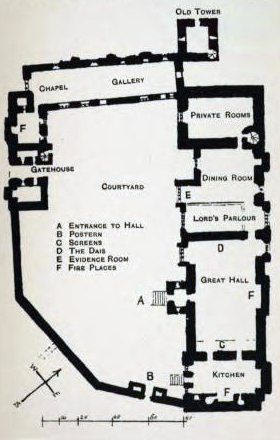Michael Waistell Taylor on:
[Wikipedia]
[Google]
[Amazon]
Michael Waistell Taylor (1824–1892) was a Scottish physician, known also as an
 Taylor was the author of medical treatises on subjects, and in 1881 wrote a substantial article on the fungoid nature of
Taylor was the author of medical treatises on subjects, and in 1881 wrote a substantial article on the fungoid nature of
antiquarian
An antiquarian or antiquary () is an aficionado or student of antiquities or things of the past. More specifically, the term is used for those who study history with particular attention to ancient artefacts, archaeological and historic si ...
.
Life
The son of Michael Taylor, anEdinburgh
Edinburgh is the capital city of Scotland and one of its 32 Council areas of Scotland, council areas. The city is located in southeast Scotland and is bounded to the north by the Firth of Forth and to the south by the Pentland Hills. Edinburgh ...
merchant, was born at Portobello in Midlothian
Midlothian (; ) is registration county, lieutenancy areas of Scotland, lieutenancy area and one of 32 council areas of Scotland used for local government. Midlothian lies in the east-central Lowlands, bordering the City of Edinburgh council ar ...
on 29 January 1824. He was educated at Portsmouth
Portsmouth ( ) is a port city status in the United Kingdom, city and unitary authority in Hampshire, England. Most of Portsmouth is located on Portsea Island, off the south coast of England in the Solent, making Portsmouth the only city in En ...
, and matriculated at the University of Edinburgh
The University of Edinburgh (, ; abbreviated as ''Edin.'' in Post-nominal letters, post-nominals) is a Public university, public research university based in Edinburgh, Scotland. Founded by the City of Edinburgh Council, town council under th ...
in 1840, studying botany and graduating with an MD in 1843. In the following year he obtained a diploma from the Edinburgh College of Physicians and Surgeons. He was appointed assistant to Professor John Hutton Balfour
John Hutton Balfour (15 September 1808 – 11 February 1884) was a Scottish botanist. Balfour became a Professor of Botany, first at the University of Glasgow in 1841, moving to the Edinburgh University, University of Edinburgh and also becomin ...
, and was also one of the founders and early presidents of the Hunterian Medical Society.
During 1844 Taylor studied surgery at Paris for nine months, and then visited European cities collecting botanical specimens. In 1845 he settled at Penrith in Cumberland
Cumberland ( ) is an area of North West England which was historically a county. The county was bordered by Northumberland to the north-east, County Durham to the east, Westmorland to the south-east, Lancashire to the south, and the Scottish ...
, and soon after that succeeded to the practice of Dr John Taylor. In 1858 he discovered that scarlet fever
Scarlet fever, also known as scarlatina, is an infectious disease caused by ''Streptococcus pyogenes'', a Group A streptococcus (GAS). It most commonly affects children between five and 15 years of age. The signs and symptoms include a sore ...
might be caused by contamination in the milk supply. In 1868 he assisted in founding the border counties branch of the British Medical Association
The British Medical Association (BMA) is a registered trade union and professional body for physician, doctors in the United Kingdom. It does not regulate or certify doctors, a responsibility which lies with the General Medical Council. The BMA ...
, and was the second to hold the office of president.
Taylor as an antiquary made local discoveries: the vestiges of Celtic occupation on Ullswater
Ullswater is a glacial lake in Cumbria, England and part of the Lake District National Park. It is the second largest lake in the region by both area and volume, after Windermere. The lake is about long, wide, and has a maximum depth of . I ...
, the starfish
Starfish or sea stars are Star polygon, star-shaped echinoderms belonging to the class (biology), class Asteroidea (). Common usage frequently finds these names being also applied to brittle star, ophiuroids, which are correctly referred to ...
cairns of Moor Divock, the prehistoric remains at Clifton, and the Croglin moulds for casting spear-heads in bronze. He was elected a fellow of the Society of Antiquaries of London
The Society of Antiquaries of London (SAL) is a learned society of historians and archaeologists in the United Kingdom. It was founded in 1707, received its royal charter in 1751 and is a Charitable organization, registered charity. It is based ...
on 27 May 1886, and was a fellow of the Scottish Society of Antiquaries, a member of the Epidemiological Society, and a member of the council of the Royal Archæological Institute. He joined the Cumberland and Westmorland Antiquarian and Archæological Society soon after its formation in 1866.
Taylor retired from medical practice in 1884, and died in London on 24 November 1892. He is buried at Penrith in the Christ Church burial-ground.
Works
 Taylor was the author of medical treatises on subjects, and in 1881 wrote a substantial article on the fungoid nature of
Taylor was the author of medical treatises on subjects, and in 1881 wrote a substantial article on the fungoid nature of diphtheria
Diphtheria is an infection caused by the bacteria, bacterium ''Corynebacterium diphtheriae''. Most infections are asymptomatic or have a mild Course (medicine), clinical course, but in some outbreaks, the mortality rate approaches 10%. Signs a ...
. At the time of his death he had completed a long work on the ''Old Manorial Halls of Westmorland and Cumberland'' (London, 1892).
Family
In 1858 Taylor married Mary Rayner, daughter of J. H. Rayner of Liverpool. Together they had three daughters and three sons.Notes
Attribution {{DEFAULTSORT:Taylor, Michael Waistell 1824 births 1892 deaths 19th-century Scottish medical doctors Scottish antiquarians Fellows of the Society of Antiquaries of London Alumni of the University of Edinburgh